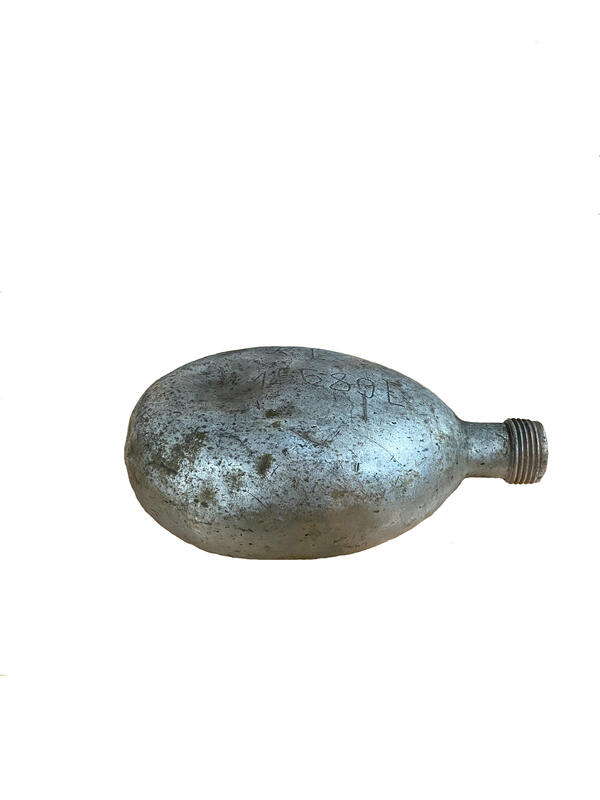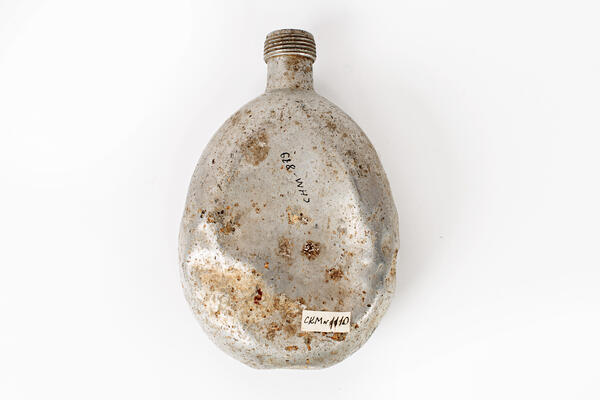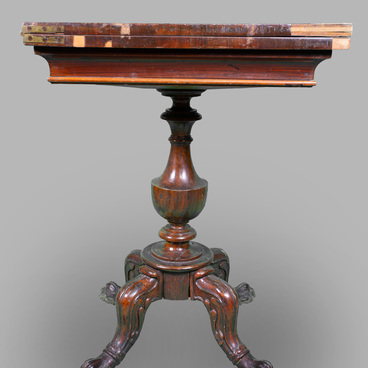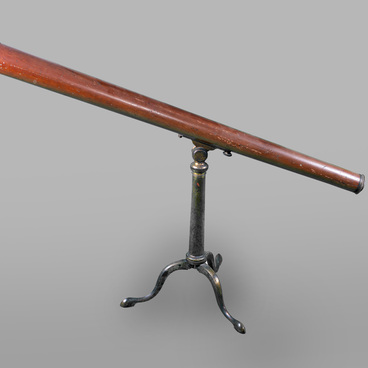Battles are about more than just the courage of soldiers. Other important factors include high-quality gear, weapons, and military equipment. During the Great Patriotic War, the outfit and gear of soldiers were practical and reliable. One of the mandatory personal items of a soldier was a flask for water.
In the Soviet Union, the production of aluminum soldier’s flasks of two grades began in 1926. Before that, Soviet soldiers used the flasks of the Imperial Russian Army. The new flasks were almost exactly the same as the old ones. A spoon mount was added, and the cap was different: instead of a cork plug, it was a screw cap with a fine thread, which had five turns. The cap was made of rubber, imparting an unpleasant flavor to the water, which is why it was later replaced with one made of cork, and the number of turns was reduced to three.
In March 1932, a new standard was approved for the gear of Red Army soldiers. Flasks with a capacity of 0.75 liters were introduced to replace those with a capacity of 1 liter. They could be made of aluminum, tin, or brass. In 1941, the flasks began to be painted green, and two years later — enameled.
According to Soviet military standards, each member of the military was provided one flask, while doctors often had two flasks or one large container. Soldiers stored water or tea in their personal flasks which they always carried along on their belts. The design of the cloth cover of the 1987 model was changed about 20 times.
The frontline flask had a number of advantages and was useful in any conditions. Water could either be poured into it immediately after being heated by the fire or boiled directly in a flask. When a thermal insulation cover was used, the liquid’s temperature could be maintained for a long time. Due to the high thermal conductivity of aluminum, the boiling water in a flask could be easily cooled by placing the flask in a stream of water. On the other hand, the flask could also be used as a heating pad. Despite the indentations, the aluminum flask was durable and strong. Each flask featured a manufacturer’s mark and a star as the confirmation of approval by a military warehouse.
Some soldier’s flasks were also made of glass. They had a smaller capacity — 180 and 450 grams. They were equipped with special covers containing cotton wool or sawdust to soften the potential impact. However, due to the heaviness and fragility of glass flasks, they were discontinued.
In the Soviet Union, the production of aluminum soldier’s flasks of two grades began in 1926. Before that, Soviet soldiers used the flasks of the Imperial Russian Army. The new flasks were almost exactly the same as the old ones. A spoon mount was added, and the cap was different: instead of a cork plug, it was a screw cap with a fine thread, which had five turns. The cap was made of rubber, imparting an unpleasant flavor to the water, which is why it was later replaced with one made of cork, and the number of turns was reduced to three.
In March 1932, a new standard was approved for the gear of Red Army soldiers. Flasks with a capacity of 0.75 liters were introduced to replace those with a capacity of 1 liter. They could be made of aluminum, tin, or brass. In 1941, the flasks began to be painted green, and two years later — enameled.
According to Soviet military standards, each member of the military was provided one flask, while doctors often had two flasks or one large container. Soldiers stored water or tea in their personal flasks which they always carried along on their belts. The design of the cloth cover of the 1987 model was changed about 20 times.
The frontline flask had a number of advantages and was useful in any conditions. Water could either be poured into it immediately after being heated by the fire or boiled directly in a flask. When a thermal insulation cover was used, the liquid’s temperature could be maintained for a long time. Due to the high thermal conductivity of aluminum, the boiling water in a flask could be easily cooled by placing the flask in a stream of water. On the other hand, the flask could also be used as a heating pad. Despite the indentations, the aluminum flask was durable and strong. Each flask featured a manufacturer’s mark and a star as the confirmation of approval by a military warehouse.
Some soldier’s flasks were also made of glass. They had a smaller capacity — 180 and 450 grams. They were equipped with special covers containing cotton wool or sawdust to soften the potential impact. However, due to the heaviness and fragility of glass flasks, they were discontinued.






